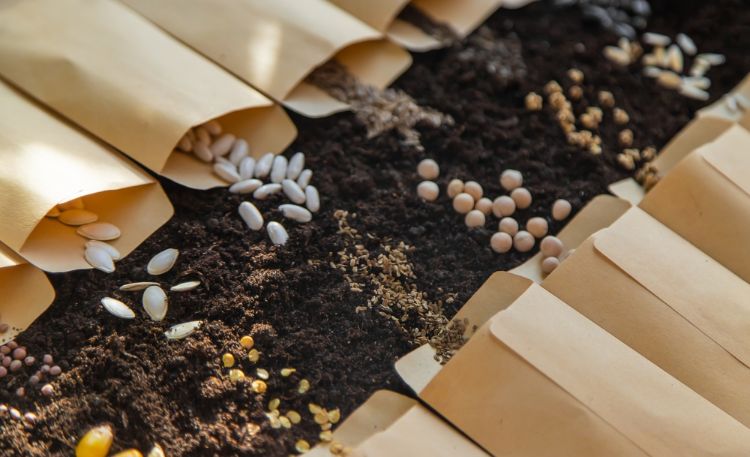We all know we should be eating more vegetables. But trying to find fresh, sustainably grown, and actually tasty produce in the store can be trickier than we'd like. Not only this, but buying fresh vegetables can be an expensive habit, leading us towards more convenient, less high-quality food options.
But what you may not have considered is growing your own vegetables at home. When you grow your own produce, you know exactly where everything has come from and can feel safe and proud about what you consume. And what's even better is that creating your own productive vegetable garden at home can be done for free with these handy tips.
Advertisement
1. Composting

Shutterstock
Buying compost to grow your vegetables can quickly add up over time. But you can actually repurpose your kitchen scraps and food waste to create a nutrient-rich compost that your plants will love. You can upcycle any large bucket or storage bin and get started immediately!
2. Collecting rainwater

Shutterstock
Using harvested rainwater to nourish your vegetable garden doesn't just save money - it can help to save the planet, too! Adding a rainwater barrel in the corner of your garden can quickly become a reliable source of extra moisture to water your vegetable garden in drier periods.
3. Minimizing tools

Shutterstock
While it can be tempting to go out and purchase a whole host of gardening tools to get your vegetable garden started, the good news is that it's totally unnecessary. All you really need is a trowel, a gardening fork, and a small pair of shears, and you may be able to source these second-hand. Don't overbuy when starting your garden - begin with the essentials and you can (potentially) go from there.
4. Sourcing beds

Shutterstock
If you don't currently have access to beds in your garden, it might be necessary that you create your own. While grow-bags and readymade beds may be tempting, they're not necessary to get your garden started. You can create your own beds from upcycled materials, like straw bales or wooden pallets, or even use old furniture to hold your garden in.
5. DIY seed trays

Shutterstock
Most vegetables need to begin as seedlings before being transferred to your outdoor beds. But this doesn't mean you need to purchase tons of starter pots. You can use many upcycled items to start your seedlings, like plastic food containers, old plastic bottles, and even egg boxes and toilet rolls!
6. Accumulating seeds

Shutterstock
You may not even need to purchase the seeds to start your vegetable crops. Some organic vegetables (like potatoes or dried bends) can work as seeds on their own. But another great way to get hold of vegetable-freebies is by getting involved with your local growing community. Reach out to nearby allotments and community gardens to see if any generous growers want to help out.
7. Choose wisely

Shutterstock
There are vegetable options that are better suited to beginner growers, which can help ensure better success with your garden. Tomatoes, peas, cucumbers, and leafy herbs tend to be a great way to get started, plus they grow fast for (nearly) instant rewards.
8. Cut and come again

Shutterstock
Another great way to maximize your garden's productivity is to choose vegetables that only need to be planted once. Rhubarb, Swiss chard, apples, and plums are all perennials, meaning you just need to plant them once and then enjoy a harvest every year.
9. Cut at the stalk

Shutterstock
There are also some vegetables that can be encouraged to grow back by cutting them off at the stalk, rather than further back. Cucumbers, in particular, can be maximized through this method.
10. Go indoors

Shutterstock
Advertisement
A greenhouse is a great way to get the most growth potential out of your local weather conditions. But you don't need to purchase a whole new structure to reap the same benefits. You can use recycled plastic sheeting or pipes to up the warmth and humidity in certain areas of your garden for free!

